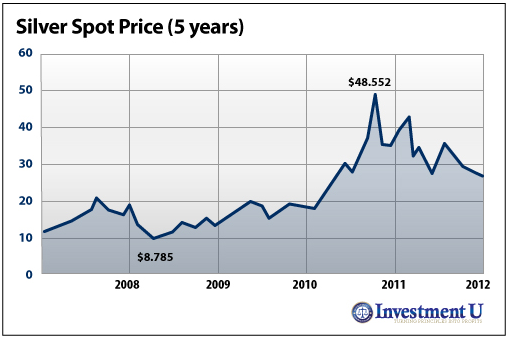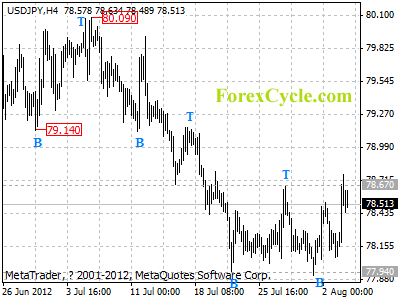Article by Investment U
This past March, I wrote an article titled Understanding the Volcker Rule. It provides some background as to the debate surrounding the separation of commercial and investment banking within the banking system.
There’s a widely held belief out there that if we went back to the old days when they were legally separated, banks would behave. (See the Glass-Steagall Act of 1932.)
Well, the pot was stirred a little further last week when Former Citigroup Chairman and CEO Sandy Weill went on CNBC and called for the breakup of big banks.
The irony is that back in 1999, Weill was whispering in Bill Clinton’s ear that he should sign Republican legislation repealing the Glass-Steagall Act – which allowed for the combination of different financial entities to merge into big banks. There is a legitimate reason why Weill is considered the “Father of the Financial Supermarket.”
His Exact Words
“I’m suggesting that they be broken up so that the taxpayer will never be at risk, the depositors won’t be at risk, the leverage of the banks will be something reasonable, and the investment banks can do trading, they’re not subject to a Volker rule, they can make some mistakes, but they’ll have everything that clears with each other every single night so they can be mark-to-market.”
He went on to touch on the following points:
- Banks ought to be totally transparent with nothing off balance sheet.
- Commercial and investment banks must be entirely separated.
- Commercial banks should function with a leverage ratio of 12 times to 15 times of what’s on their balance sheet.
- Along with “mark-to-market” accounting – using fair market accounting practices – if a bank hedges, that position needs to be cleared through an exchange.
Now he’s been getting it from both sides since he made these remarks. Wall Street seems disappointed that one of their modern day forefathers now appears misguided. Those of the populist “occupy” movement are screaming “hypocrisy!”
Some of what he’s said makes sense. However, is this the way to go about the matter of changing our banking industry? If this whole proposition is feasible, we need to answer these questions:
1. What triggered the mess back in 2007?
Was it the investment banking operations by interconnected big banks or a housing bubble that triggered the 2007 financial crisis? From the beginning, you had exotic mortgage products being accepted by commercial banks for customers who should not have survived the vetting process. Then, the investment banking world dove into the mess.
2. Was the problem started by big banks or investment banks?
If we look back to 2007, we see that Lehman Brothers and Bear Stearns were the catalyst for the downturn. Both were operating primarily as independent investment banks. In theory, the same thing could have happened under the Glass-Steagall Act.
3. And so, how would you begin to break up the big banks?
The “Break Up the Big Banks” rally cry has become trendy on Wall Street and Capitol Hill lately. There’s just one problem, no one knows how to do it. Or rather, no one has put the process on paper. Just look at the nightmares created by writing parts of the Dodd-Frank bill as far as regulation is concerned.
4. Smaller must be safer, right?
Big is bad! Small is good – so that’s what most of us believe about banks these days. The logic behind slicing up big banks is making them smaller and more manageable entities.
But we may have made the assumption that all bank divisions can be easily and cleanly divided in that sense. This may not play out as we thought. The reason big banks are big banks are because of their interconnectedness. So, if you split up a bank and those new divisions don’t turn a profit, you’ve not just split it up but destroyed it. That split-up may cause a bailout itself. And bailouts are what we don’t want to deal with anymore.
5. So if you did break them up, how much uncertainty would that cause?
We here in America love to be self-involved. It’s like if we do something here, the world will follow suit. It’s a new game out there with more rules and a whole lot more players. One of the major reasons behind repealing Glass-Steagall was our banking system’s competitive disadvantage on the global scene. We were the only country separating our commercial and investment processes.
So if we did make J.P. Morgan (NYSE: JPM) and Citigroup (NYSE: C) separate, what might happen outside of the U.S. government’s control? Well, big banks could spin off their commercial enterprises domestically while maintaining big bank status abroad. Who is to say that divested banking parts could not be bought up by international super banks where our regulators have no reach?
The U.S. banking system is small – in comparison to GDP – relative to other developed countries. If we were at a global disadvantage in 1999, just think about what would happen in 2012 if big banks were separated again.
Concentrating on “to Fail” Rather Than “Too Big”
Here’s what needs to be focused on rather than populist angst. Stop concentrating on the “too big” part, but rather direct your attention to the “to fail.”
Here’s what we need to concentrate on:
- Sufficient amounts of capital
- Transparency
- Regulators actually doing their jobs
I believe we’ve gotten so preoccupied with size when we need to concentrate on risk. More importantly, we need to correctly assess risk rather than labeling it all bad. Did J.P. Morgan make a bad bet last quarter that costs them over $4 billion? They sure did. But did J.P. Morgan make a profit that same quarter? Sure did. That loss didn’t hurt their bottom line because of the risk they can take on.
Please don’t think I’m endorsing that fiasco that took place over in the London offices of J.P. Morgan. However, regulators must take into account that different banks can take on different risks and regulate accordingly.
For this to happen, regulators must do their job. As fragile as the world’s banking system is at the moment, the last thing you want to do is put it in some new system to totally screw us up. We’re having problems regulating the current system; imagine if we changed all the rules.
Food for thought.
Good Investing,
Jason
Article by Investment U


